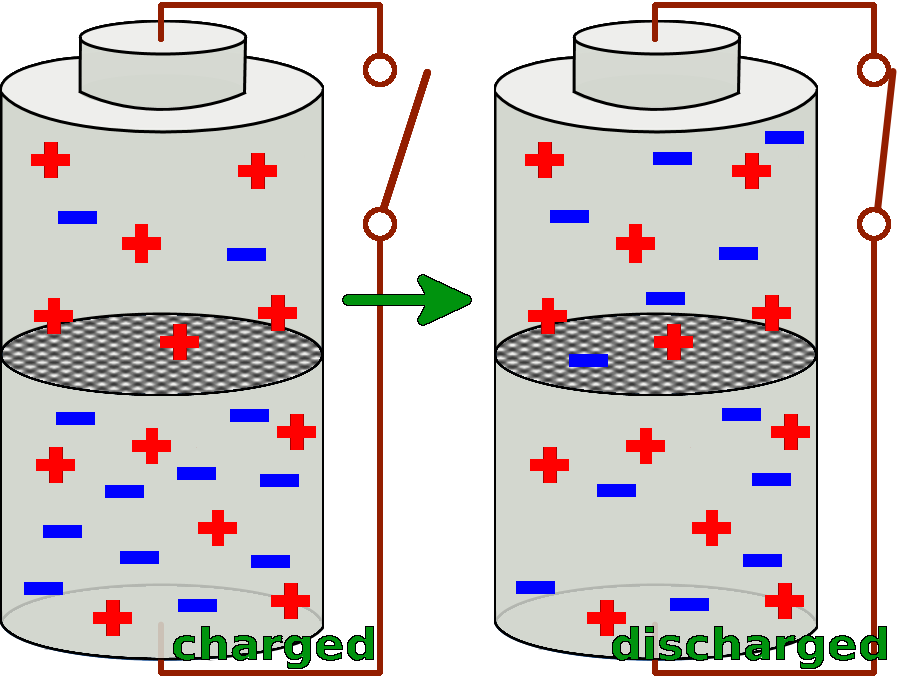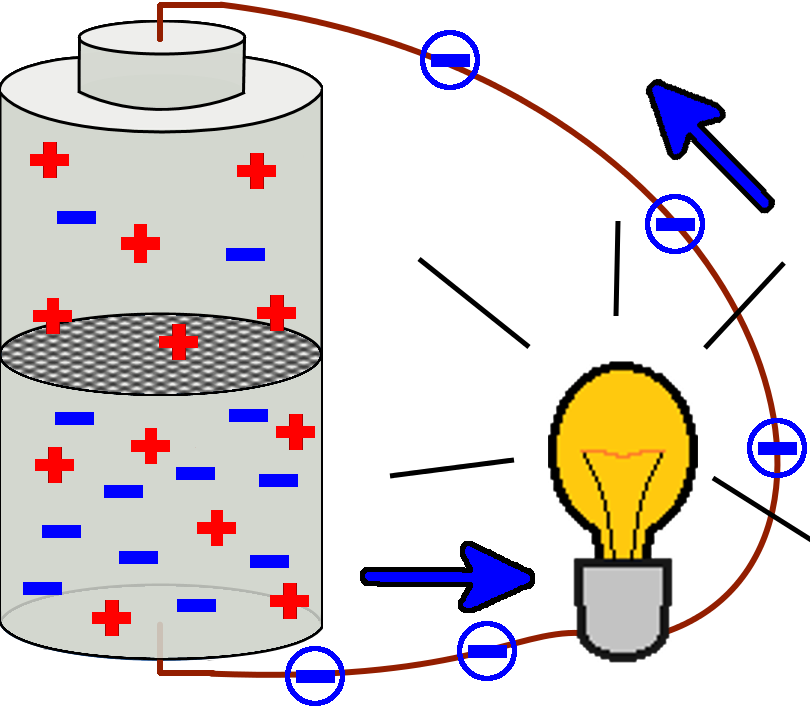Batterie
 Batteries are energy stores. They store energy by separating charges. If the stored energy is accessed, this will happen in the form of current flow.
Batteries are energy stores. They store energy by separating charges. If the stored energy is accessed, this will happen in the form of current flow.
Construction and functionality
A battery consists of two separated cells. In the cell at the negative pole there is a surplus of negative charges. In the cell at the positive pole there is a lack of negative charges. If the two cells are connected by a conductor, the negative charges can move through the conductor. An electric current is flowing through the wire to the other cell of the battery until the charges of the two cells are balanced out.
Consequently, a battery is „empty‟, when there is the same charge distriubtion in both of the two cells and thus the battery is charged neutrally. (The left picture shows a „full‟ and an „empty‟ battery.) The size of the amount of the flowing electricity depends on the device. The discharge duration of the battery again depends on the size of the amount of current.


Certain types of batteries are rechargeable. In this case we talk about accumulators, respectively „rechargeable batteries‟. They do not differ in their construction from non-rechargeable batteries.
